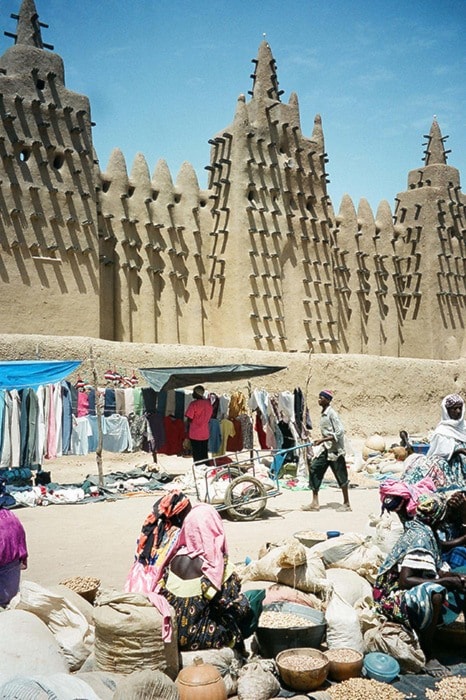DJENNE, Mali — The Great Mosque in this West Africa town is built of mud. It's the largest mud building in the world.
In the summer, when temperatures frequently top 40 degrees Celsius, it's baked kiln-hard. Then come the rains, from July to September. Torrential rains.
How, I asked, do they prevent the rain from washing away the outside of the mosque? The answer, according to my guide: they can't and they don't.
A lot of the Great Mosque runs back into the Bani River.
Every year a massive restoration project takes place. Volunteers from the area — up to 4,000 by some estimates — descend on the town and, overseen by masons, scoop the mud back from the riverbed and build a new façade.
When the tourists come, mainly November through March, the mosque is "great" again. And it's a truly remarkable sight, beautifully sculpted and dominated by three 11-metre-high towers.
My guide tells me that it can hold up to 5,000 people. I have to take his word for it because non-Muslims are now banned from entering. The ban came about, he says, after a French fashion photo shoot enraged the very traditional townsfolk.
Jutting out from the walls, in geometric shapes, are crossbeams. These aren't there just for esthetic reasons, the guide explains. They're needed after the rains as a sort of permanent scaffolding for the ladders and platforms that the restorers use.
The mosque was built in 1907, but looks ancient because it followed the design of the original Great Mosque, erected during the 13th century.
It stood on this site until the early 1800s when Djenné's warrior-king, Cheikou Amadou, who had no time for houses of worship, let the rains destroy it.
The original mosque was one of the most important Islamic centres in the Middle Ages. Thousands of students from all over the Middle East and North Africa came here to study the Qur'an. The present mosque is a UNESCO World Heritage Site.
Unfortunately, the fact that non-Muslims can't go inside means that the mosque is only a 15-minute wonder for many tourists.
Much more exciting, if you're here on a Monday, is what takes place literally in the shadow of its walls. It's the Djenné market, one of the must-see events in West Africa.
Traders come from all over the Bani River delta to sell spices, food, jewellery, gold, silver, textiles, carvings, goats — the list goes on and on. The colour, the din, the smells, the sights — against a backdrop of the Great Mosque — make this a memorable experience.
Prominent in the market are the artisans who sell bogolan, West Africa's famous "mud cloth." It consists of cotton strips sewn together and dyed in various designs — mostly geometric and abstract — by mud: mud from sandstone for reds and oranges; mud from the riverbed for greys and blacks and so on.
You shouldn't visit Djenné without taking away what might once have been a bit of the mosque in the form of a bogolan for your wall.
Access:
For more information on Mali, visit the Africa Guide website at www.africaguide.com/country/mali.
